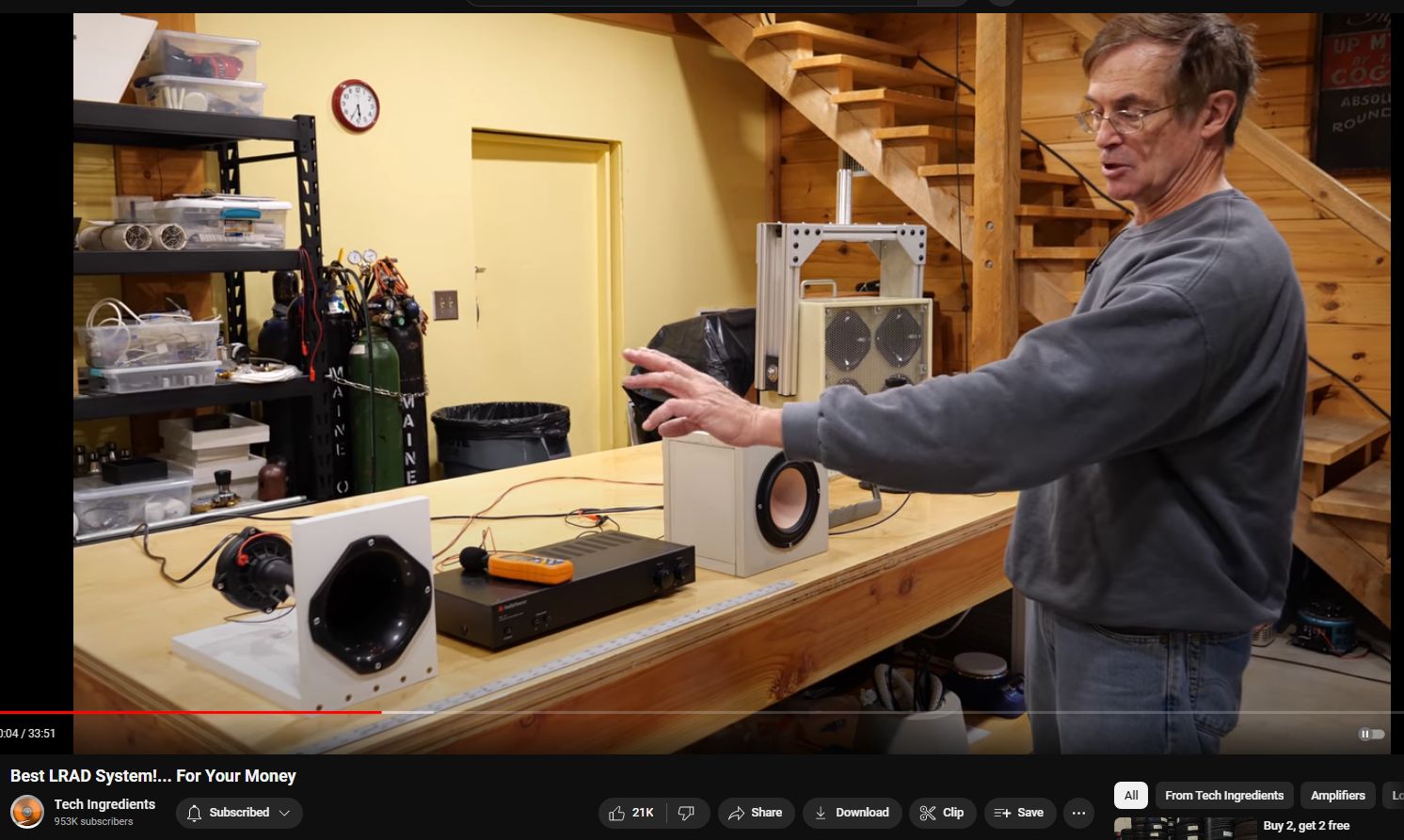LRAD
LRAD
The Long Range Acoustic Device (LRAD) is a type of non-lethal, acoustic hailing device developed for military and law enforcement applications. Its primary function is to broadcast voice messages, alarms, and tones at extremely high volumes over long distances. The LRAD’s ability to focus sound in a highly directional beam allows for clear communication or the issuance of warnings to individuals or groups from a safe distance. While not originally designed as a weapon, the LRAD’s features have led to its classification as a form of non-lethal crowd control weaponry.
How LRAD Works
The LRAD generates sound that is much more focused than that of traditional loudspeakers, allowing it to target specific areas or groups without affecting surrounding areas as much. This is achieved through the use of an array of transducer elements that produce a coherent sound wave. The operator can control the device to emit sounds at varying frequencies and volumes, with the capability to reach levels that are uncomfortable or disorienting for those in its path.

Applications
– Crowd Control: Law enforcement agencies have used LRADs for crowd control purposes during protests or riots. The device can communicate clear instructions over a considerable distance or emit deterrent tones to disperse crowds.
– Maritime and Port Security: LRADs are used by naval forces and commercial ships to communicate with approaching vessels that may not be responding to radio communication, serving both as a communication tool and a non-lethal means to deter potential threats.
– Wildlife Control: Airports and other facilities use LRADs to safely scare away birds and wildlife from runways and other sensitive areas, helping to prevent accidents.
Controversy and Concerns
The use of LRADs for crowd control has been controversial, particularly regarding the potential for hearing damage or other health effects from exposure to high-decibel sounds. Critics argue that the use of LRADs, especially in situations where deterrent tones are employed, can cause panic, disorientation, and long-term auditory harm. There are calls for clear guidelines and restrictions on the use of acoustic devices like LRADs to ensure they are used safely and ethically.
Legal and Ethical Considerations
The deployment of LRADs, especially in civilian settings, raises important legal and ethical questions about the balance between maintaining public order and respecting individuals’ rights. Authorities using LRADs are advised to undergo thorough training and follow operational guidelines that prioritize safety and respect for human rights.
In summary, while the LRAD offers a versatile communication and crowd control tool with its non-lethal capabilities, its use necessitates careful consideration of potential health impacts, ethical implications, and the need for transparent operational protocols.